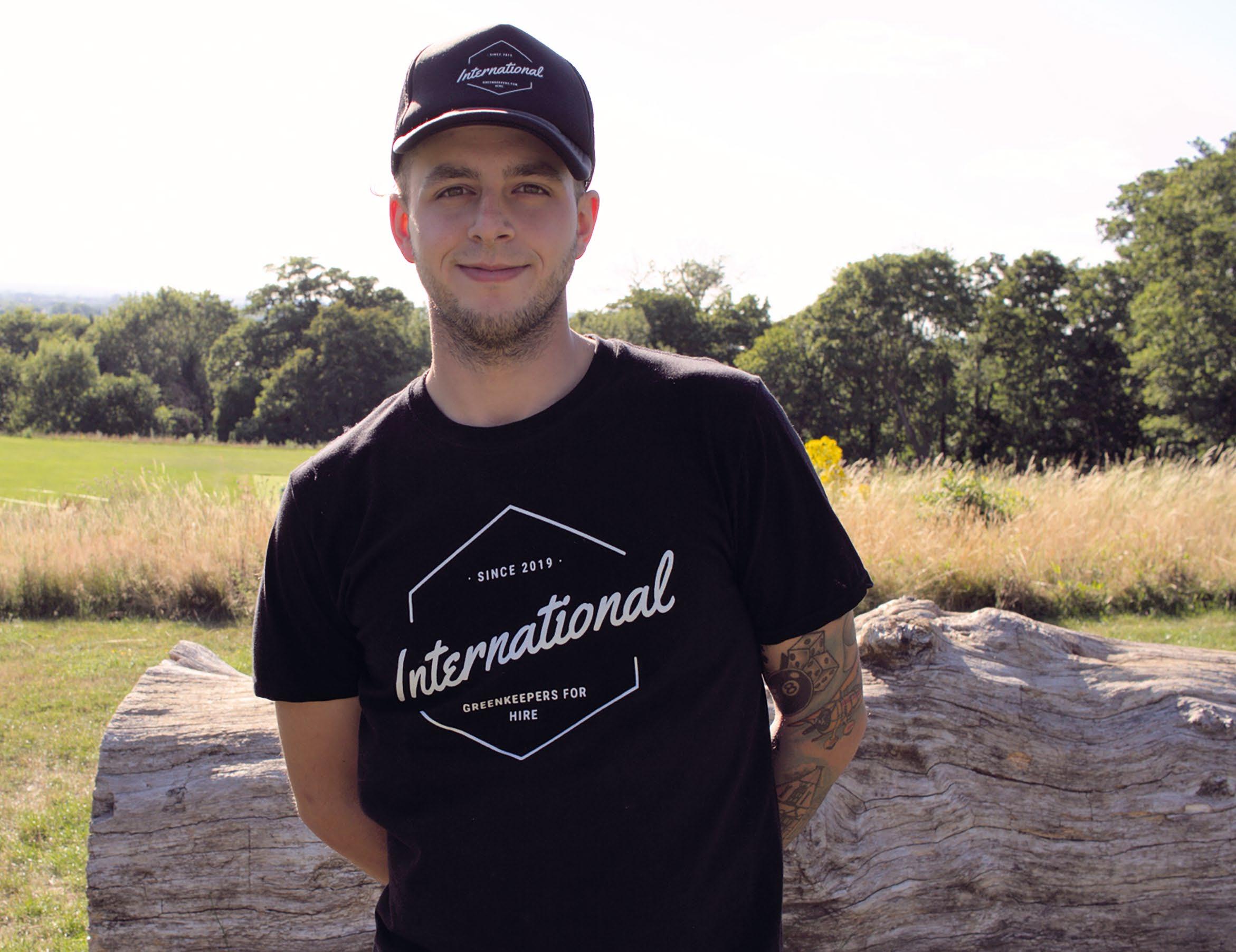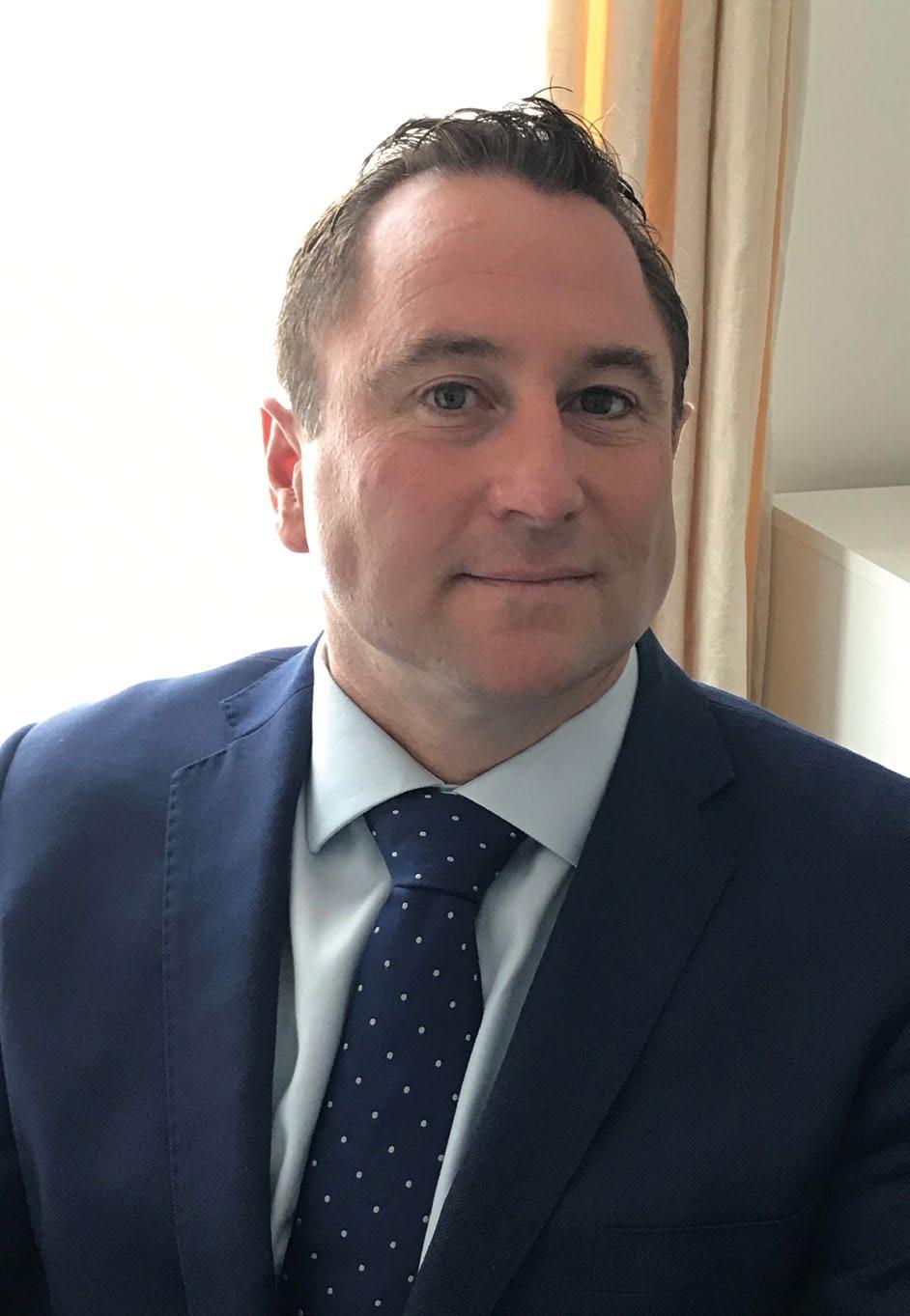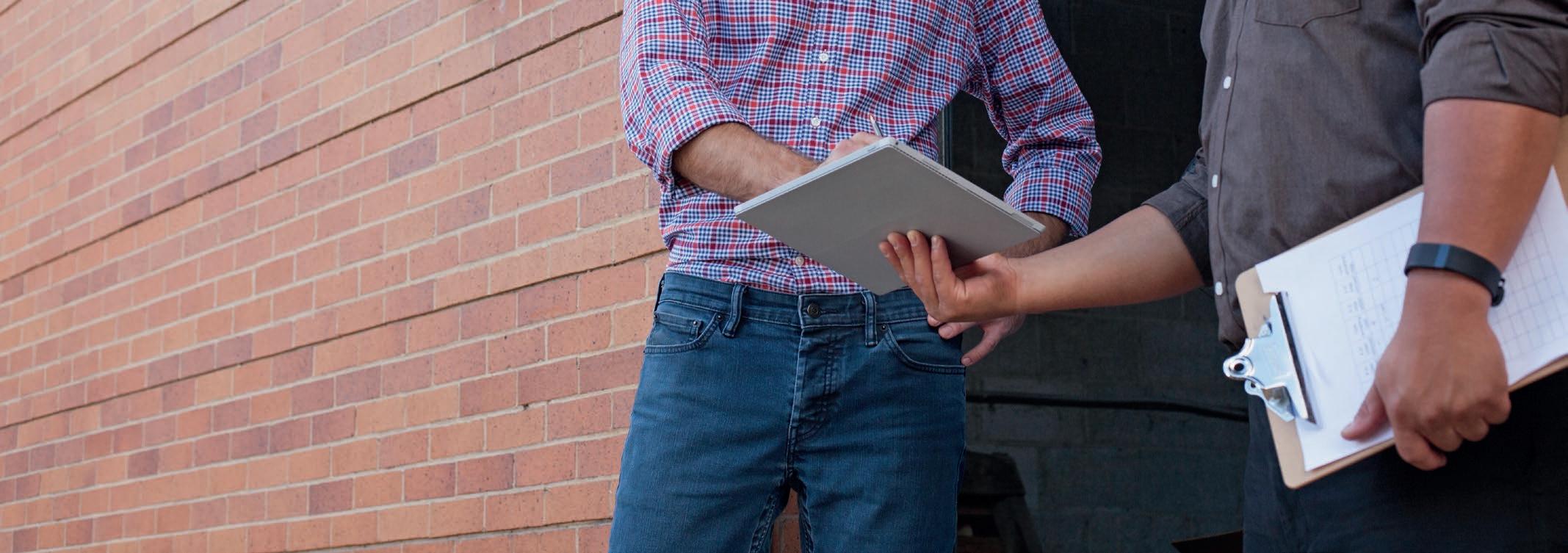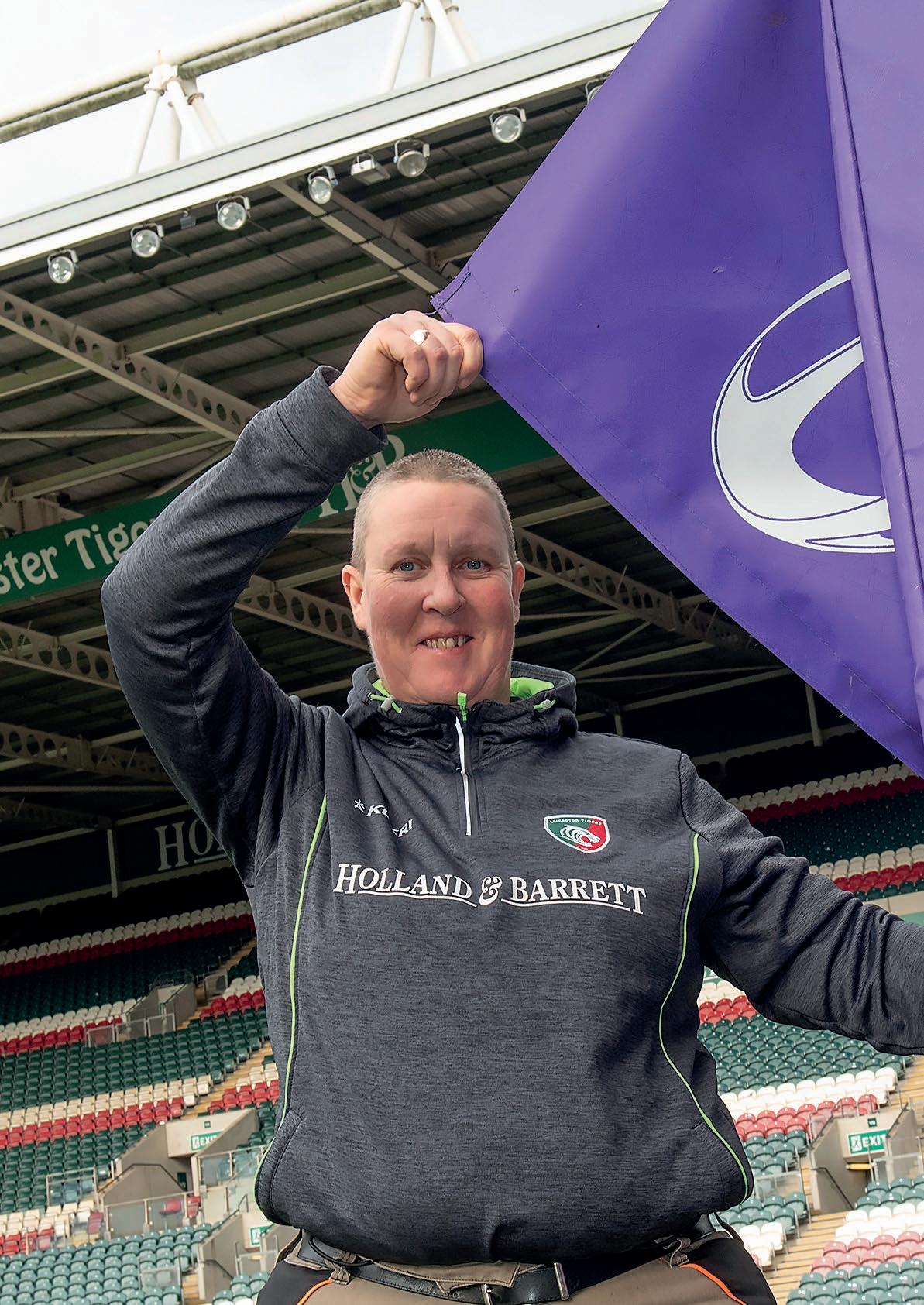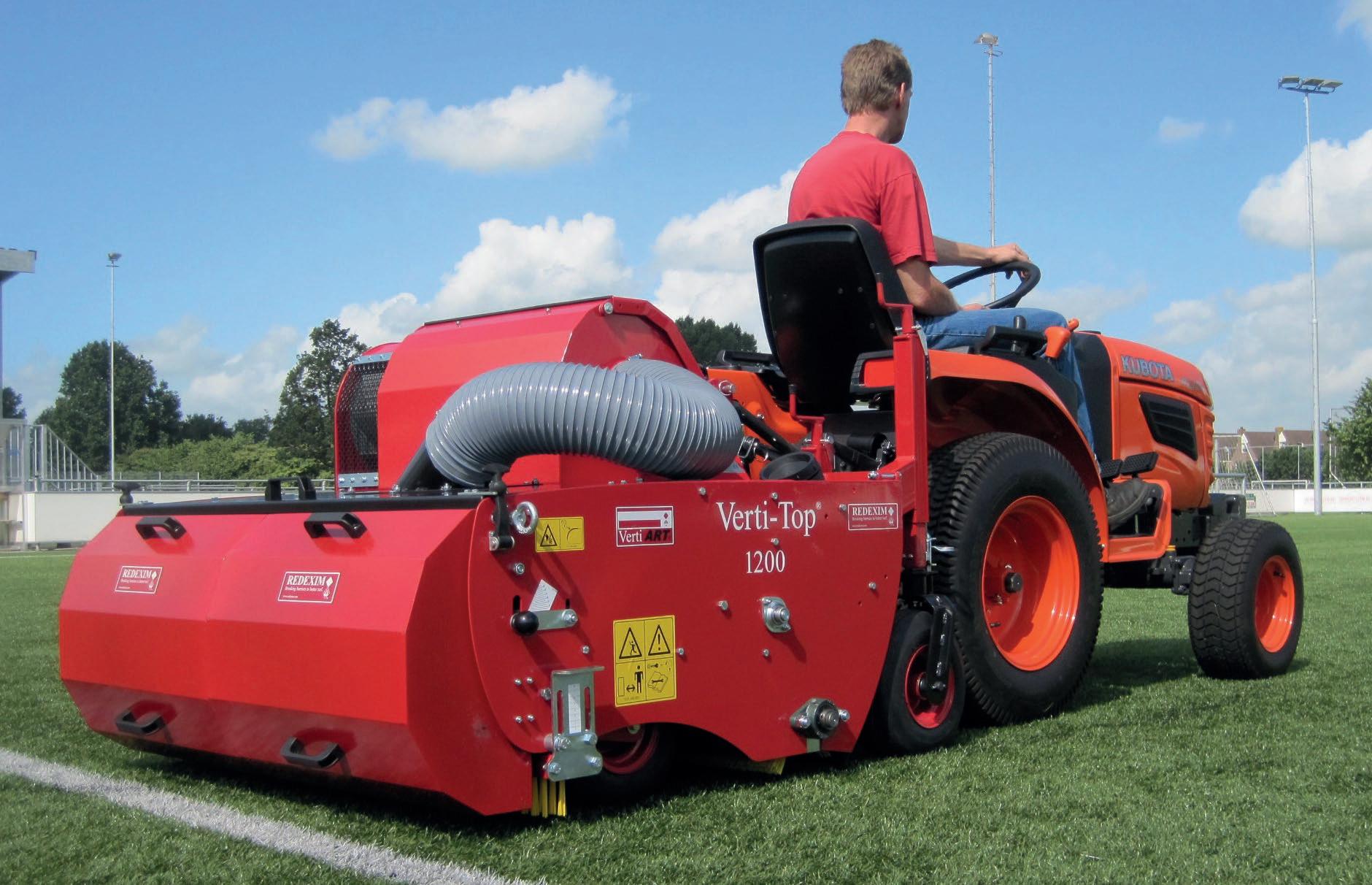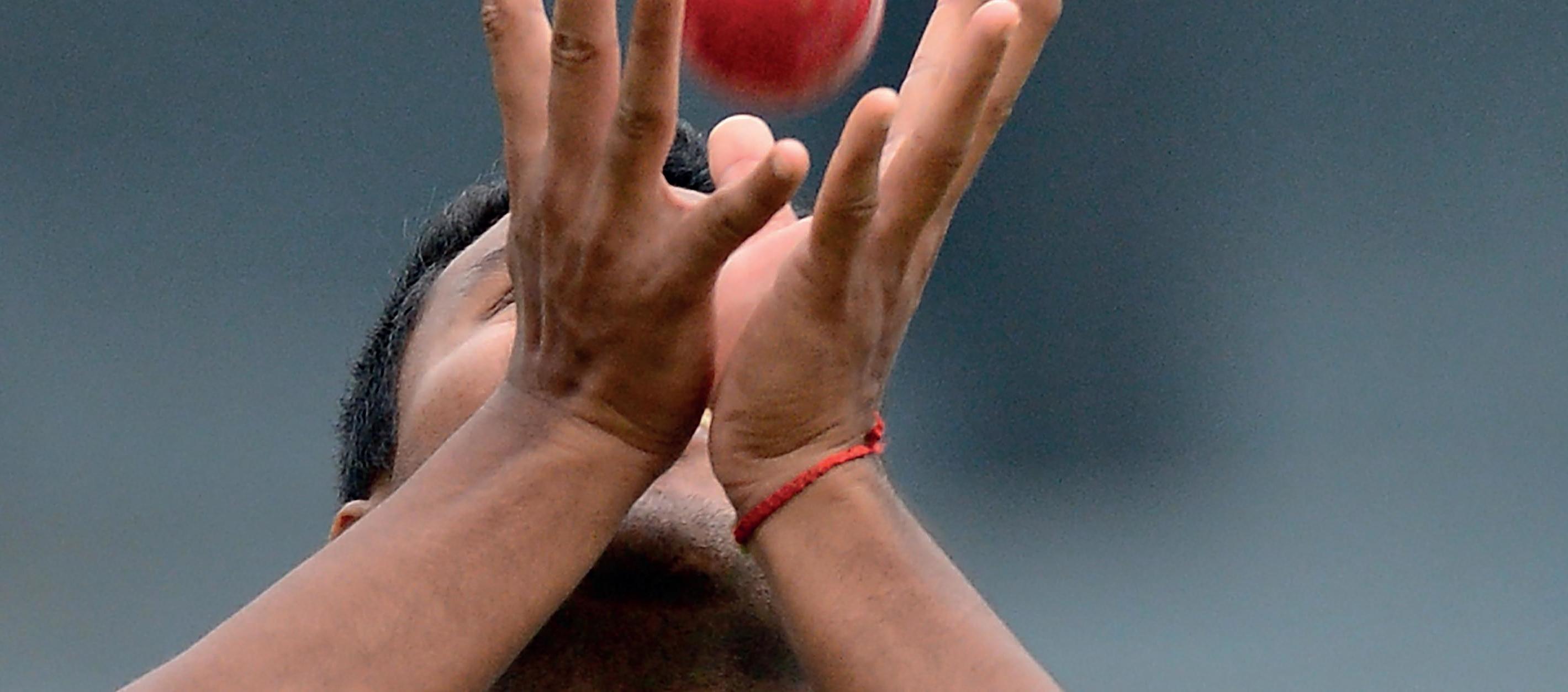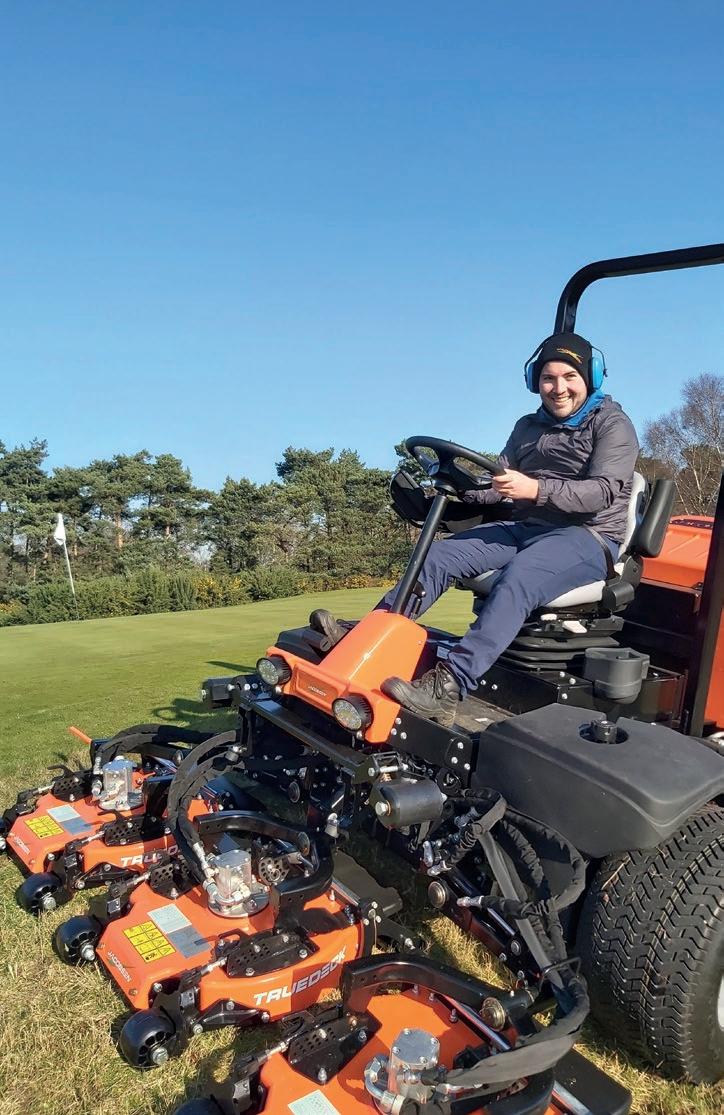
4 minute read
Best practice: University of Warwick
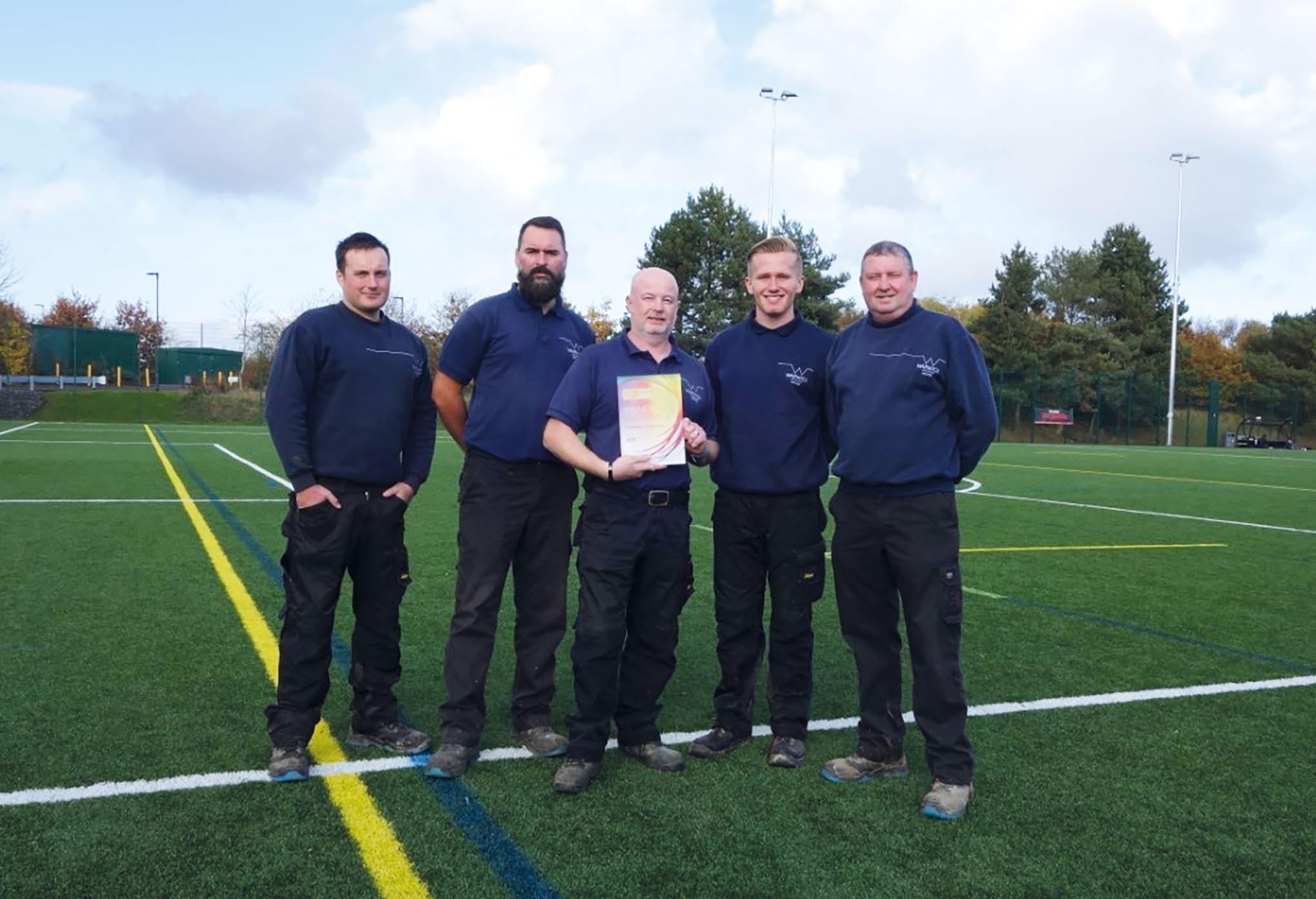
UNIVERSITY MEETS THE CHALLENGE
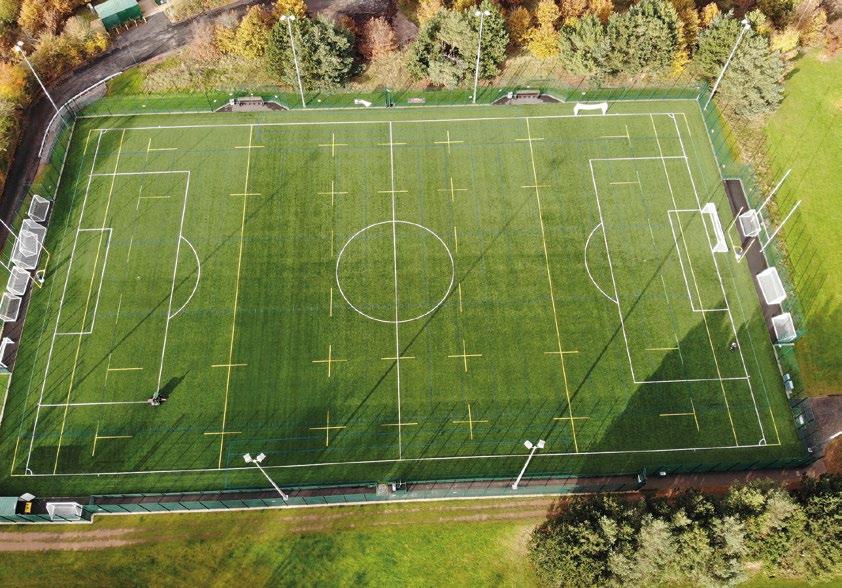
The University of Warwick’s grounds team does a superb job maintaining a vast array of facilities for an enormous number of users – there are 25,000 students alone – evidenced by its 2019 GMA Industry Award and by its patronage by players of every ability
Andy Carmichael Freelance writer
THE LOCKDOWN has affected the grounds industry in many different ways and, after an initial period of furlough for some of the University of Warwick’s grounds team, all eight of them are now back preparing surfaces, ready for when team sport is given the green light. While some of the team remained on site to keep the pitches mowed, head groundsperson Charlie Yeomans was home-based and dealt with the administration and management tasks demanded of his position. Now, he says, he is pleased to be “back on the tools again” since there is clearly a lot of work to be done given the number of pitches the team looks after and this year’s highly variable weather.
The university has a vast array of facilities reflecting the broad range of sports offered in higher education and the competitive level at which they are played. The five grass football pitches, three rugby pitches, two cricket squares, two American football pitches and four lacrosse areas can, during term time especially, create a considerable workload – particularly on Thursday mornings, the day after universities have traditionally played a lot of their competitive fixtures. Charlie and his team have access to a comprehensive machinery portfolio to help them cope with the demands (see Machinery matters, opposite page) and to keep the football and lacrosse pitches at 25mm, rugby at 50mm and cricket at 15mm.
The role of synthetics
There are also numerous non-turf surfaces, the management of which represented the team’s awardwinning entry for the 2019 GMA SCH Supplies Best Managed Artificial Sports Surface. While artificial pitches have their critics, and Charlie recognises his own “love for grass”, he is keen to support the position that different synthetic environments now occupy: “They have their place,” he says. Without the university’s combination of 3G courts for tennis, basketball and netball, and a water-based hockey pitch, it would be impossible to host not only the numbers taking part in student and staff sport, but also the wider community and corporate use. Such use beyond the three academic terms is vital as many of the students (of whom there are
Opposite, left: Charlie and his team with their GMA industry award. Opposite, right: the team manages a mix of natural grass and synthetic surfaces. This page: two of the fleet of machines that help keep the grounds in good shape
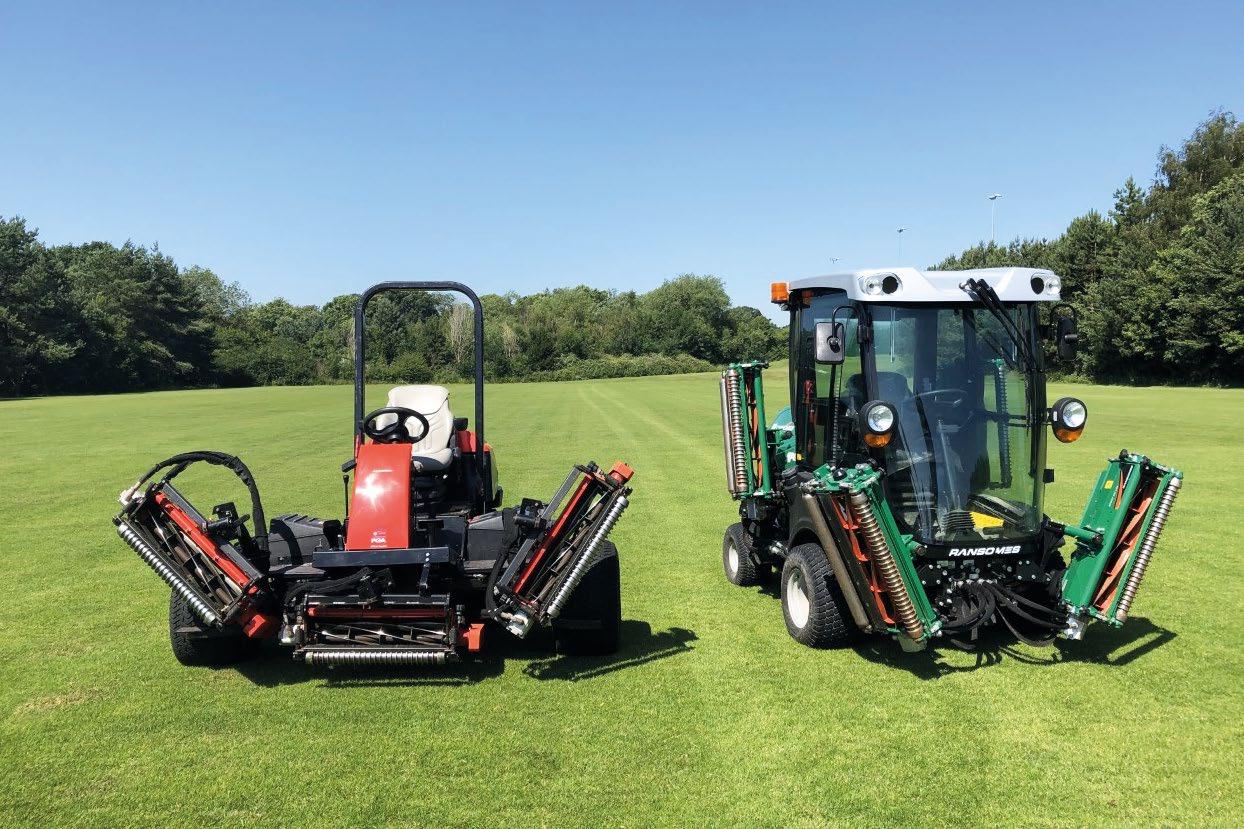
around 25,000) only occupy the site for 30 weeks of the year.
“Brush it and clean it – it is non-stop for the artificial surfaces,” says Charlie. “Maintenance is key.” The water-based hockey pitch is particularly intriguing. The dense synthetic carpet does not have a traditional infill material; instead, it is filled with water before play via jets linked to storage tanks. A ‘top up’ at half time helps maintain the level and provides an elite surface that sees the ball move around at a rapid pace, thanks to the reduced friction. I wonder if they ever have a problem with inappropriate use or muddy boots migrating dirt between fibres? Charlie says not, and that the users know how they should act and that it is in their own interests not to damage the longevity of the surface.
Opening the gates
Charlie suggests that opening up the facilities to the public is about maintaining a balance of community and commercial use, to help subsidise student costs while protecting the needs of student sport. Pitches are regularly rotated to avoid excessive wear and to allow them to be experienced at their best at every level of capability.
Warwick’s 750-acre campus would have been hosting the Premier League Kicks initiative again this year and large-scale tournaments, while Wasps rugby union club would have been just one of many regular visitors training on site. Charlie describes how he works closely with the university sports centre to co-ordinate operations, emphasising “if you don’t communicate, it doesn’t work”. Indeed, he will be present at meetings with prospective users, something he believes “gives them confidence” by seeing everyone who makes their hosting of sport successful. And in his 32 years with the organisation, starting as a YTS school-leaver, usage of the sports grounds has quadrupled.
While it is now planned for the campus to open in September, the pitches are still being maintained to the expected standard – ready for when sport can resume and the university can once again host players of every calibre, from junior community level up to professional and international standard. ■
Machinery matters
Included in the array of machinery and equipment available to the University of Warwick grounds team are:
• Ransomes MP495C cylinder mower • John Deere 7400 POD mower • Battery-powered Infinicut FX22 cylinder mower (for the cricket squares) • SISIS Quadraplay multi-functional turf maintenance system • Dakota 412 top dresser • Imants Shockwave 210 linear decompactor • Charterhouse Verti-Drain 7416 aerator

